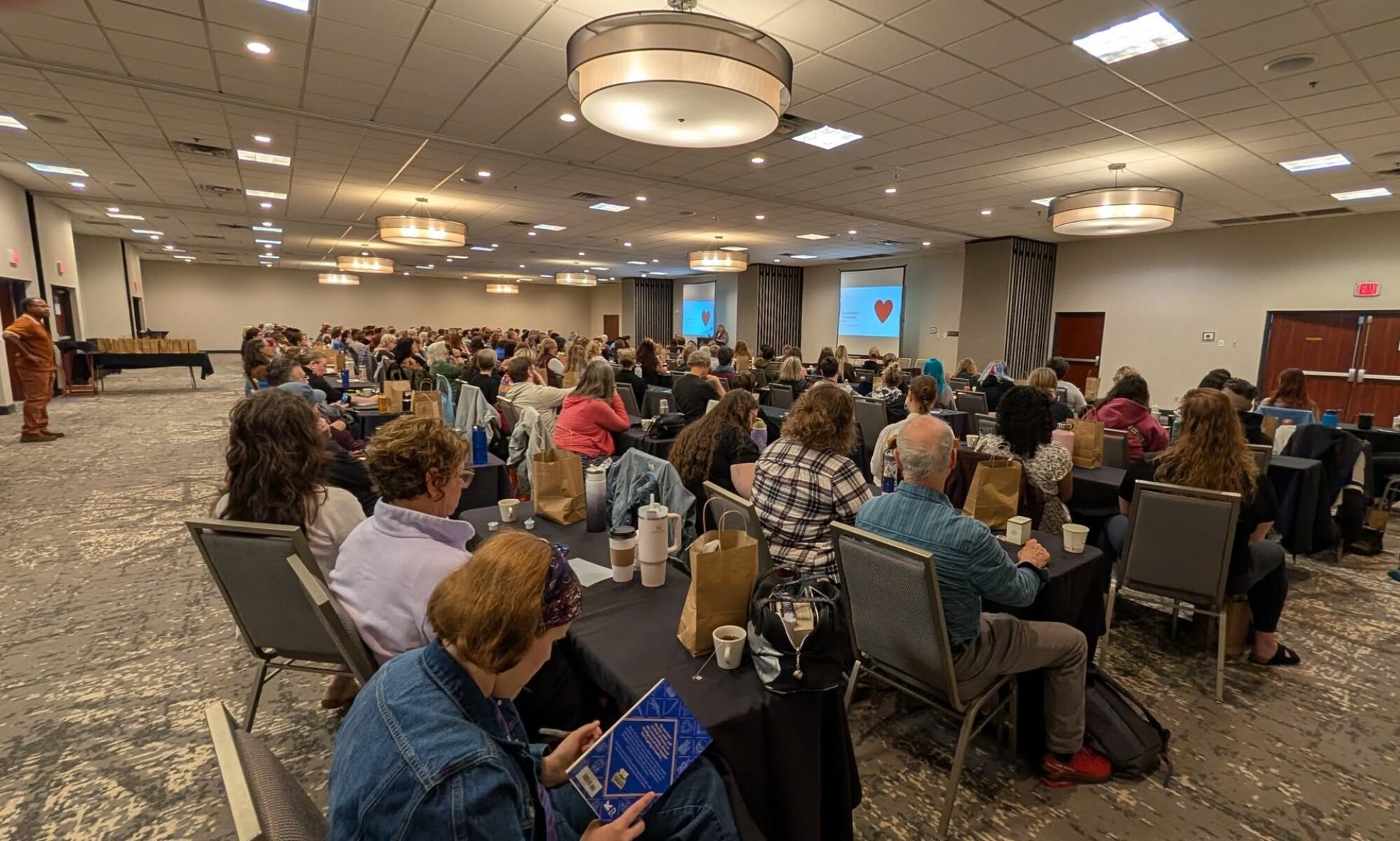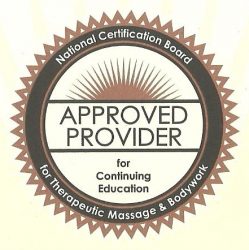Last week, the leaders of all the major organizations representing the massage therapy profession came together in St. Louis for a Massage Therapy Leadership Summit.
I have personally prayed for this to happen for a long time, and was thrilled that it took place. Rick Rosen, Executive Director of the AFMTE, shared a photo on my Facebook page (update, which has since vanished). I of course spread it through my networks, and it prompted a question from Julie Onofrio: “Are these people massage therapists, and have they ever been in practice?” I’ll try to answer that to the best of my ability. I’ve had the pleasure of meeting all these folks, and I know some of them better than others. In the event I get any of the facts wrong here, I’m sure someone can straighten me out!
I will say up front that as for the most part these are organizations that have many members, huge budgets, and myriad issues and details to take care of, I don’t believe that being a massage therapist is a prerequisite for being a CEO or an ED. That is a position that generally requires a college education, and enough expertise to run a multi-million dollar concern. The AFMTE is only two years old–they don’t quite fall into that category yet, but they will someday. Leadership of such an organization doesn’t necessarily require one to be a massage therapist, although it would certainly require an interest in massage. Here’s my scoop on the leaders:
Rick Rosen, the founder and Executive Director of the AFMTE is indeed a licensed massage therapist. In fact, he is the proud owner of the first massage therapy license issued in the state of North Carolina. He is the co-founder, along with his wife Carey Smith, of the Body Therapy Institute in Siler City, NC, which they started in 1983. It is one of only two COMTA-approved schools in the state. He was the founding chairman and a past member of the North Carolina Board of Massage & Bodywork Therapy, and was the first Executive Director of the Federation of State Massage Therapy Boards. He currently serves as Executive Director of the Alliance for Massage Therapy Education, a national organization for massage schools, teachers and continuing education providers. Rick is a 2010 inductee into the Massage Therapy Hall of Fame, and was named as one of the Top 10 People in Integrative Medicine/Integrative Health Care in 2010. He also has a degree in advertising from the University of Florida, a master’s in humanistic psychology from West Georgia College, is certified by the Hakomi Institute body-centered psychology, is certified in structural integration, and is a graduate of the Florida School of Massage.
Pete Whitridge, the President of the AFMTE, has been a massage therapist since 1987 and has been an instructor at the Florida School of Massage since 1989. He has served AMTA on the Council of Schools, served 5 years on the Florida Board of Massage including being the Chair, served COMTA as a reviewer, has also served on the faculty of the Spacecoast Health Institute for 14 years, and Indian River Community College for 7 years. He is also on the Education Committee of the Massage Therapy Foundation. Pete also has a BA in History and Political Science.
Shelly Johnson, Executive Director of AMTA, served as the Deputy Director for 8 years before being named ED in 2010 after the departure of Elizabeth Lucas. Shelly is not a massage therapist, but she has worked with associations for 22 years, including the American Society for Quality. She also was previously Executive Director for the American Society of Neuroscience Nurses, the American Board of Neuroscience Nursing, the Neuroscience Nursing Foundation and the American Society for Healthcare Materials Management of the American Hospital Association. Johnson has a BA in Political Science and Communication from Augsburg College.
Glenath Moyle, President of AMTA, gets the longevity award in this crowd! Glenath has been doing massage for more than 50 years. In her first career, she was a geriatric nurse, and massaging patients was a regular part of her routine. She attended massage school in Portland OR and started practicing in earnest in 1987. Prior to becoming the President of the national organization, Moyle was a tireless volunteer in her state chapter. Needless to say, she’s very excited that the national convention is coming to her hometown this year.
Bob Benson, the Chair of ABMP, is a graduate of Harvard College and Harvard Business School. Prior to coming to ABMP, Benson worked in public policy in Washington, DC, and spent 19 years as President of two public companies. The membership of ABMP has grown by more than 10 times over since Benson came on the scene. He was the catalyst for the creation of the Federation of State Massage Therapy Boards, notably funding that organization to get it off the ground, and he worked for nine years to get statewide regulation in California, where he now serves on the board of the California Massage Therapy Council.
Les is More! Les Sweeney, President of ABMP, joined the organization in 1994 after learning about association management at the Club Managers Association of America. He served as VP from 1999-2006. Sweeney has an MBA from the University of Colorado. In 2006, Les decided to step up to the plate and get an education in massage! He graduated from the Holistic Learning Center in Evergreen and became Nationally Certified in Therapeutic Massage. Les has expressed to me personally that he just wanted to know more about massage and get the “real feel” for what ABMP members do. Good for him for taking the plunge and investing in that.
Kate Zulaski is the Executive Director of COMTA. She has a BA in Geology, and attended the Institute for Psycho-Structural Balancing in CA, and went on to become the Dean of Education at the school before joining COMTA in 2009.
Kate has in-depth experience both as a massage therapy practitioner as well as an educator, having most recently served as Dean of Education from 2006 to 2009 for the International Professional School of Bodywork (IPSB) in San Diego, California. Prior to being named Dean of Education, Zulaski also served as an IPSB Massage Instructor and Clinic Supervisor. Zulaski has also studied a variety of bodywork modalities through the California Naturopathic College; Society of Ortho-Bionomy International; the Natural Healing Institute; and the International Professional School of Bodywork. She has been active in volunteer work for the AMTA Teacher of the Year Awards Committee and the Alliance for Massage Therapy Education Standards Committee, and is a long-time member of the ABMP.
Randy Swenson, a COMTA Commissioner who was also present, is a chiropractor. Dr. Swenson is currently a tenured professor and Dean of the College of Allied Health Sciences at National University of Health Sciences (NUHS). He developed the Massage Therapy Program in 1999 and continues to manage the day-to-day operations of the program. He is also responsible for the day-to-day operations of the Bachelor of Science in Biomedical Sciences degree completion and professional pre-requisite programs. He was previously the Academic Dean and the Dean of Curriculum Development for the chiropractic program at NUHS. He holds a Doctor of Chiropractic degree from NUHS and a Master of Health Professions Education from the Department of Medical Education of the University of Illinois at Chicago. He has led NUHS Steering Committees for Higher Learning Commission Self-Study Reports (SSR) and Commission on Chiropractic Education SSR’s. He has led and written COMTA SSR’s for the NUHS massage program. Dr. Swenson has been a site-team member, site-team leader and off-site peer reviewer with COMTA since 2006.
Ruth Werner, fearless leader of the Massage Therapy Foundation, is the author of the Guide to Pathology for Massage Therapists and the Disease Handbook for Massage Therapists, both published by Lippincott Williams & Wilkins. Werner is a graduate of the Brian Utting School of Massage in Seattle in 1985, and completed the Advanced Training Program and Teacher Training Program with the Muscular Therapy Institute in Cambridge, MA in 1991. I’ve attended a couple of classes (a definite privilege!) taught by Ruth, where she honestly shared with the class that she feels her real talent is sharing research about massage rather than actually doing massage. We’d all be a lot worse off if that wasn’t so. Her pathology book has been my go-to source from the moment I entered massage school. She has taught curriculum at 4 massage schools and continuing education classes all over the world.
Debra Persinger, Executive Director of the FSMTB, has a PhD in human services from Kansas State University. Dr. Persinger, a native of New Zealand, joined the National Certifying Commission on Acupuncture and Oriental Medicine (NCCAOM) in 1996. Before accepting the position of interim CEO, she served as the commission’s executive director of operations, and was originally hired to be its director of examination development. Persinger is also co-author of Sand to Sky: Conversations with Teachers of Asian Medicine (iUniverse, 2008).
Paul Lindamood, current CEO of the NCBTMB, has more than 20 years of executive-level experience. Lindamood has devoted his career to positioning, directing and promoting associations, professional firms, healthcare organizations, businesses and non-profits. In fact, it was in this capacity that he first began working with NCBTMB, directing the organization’s communications, public relations, media and re-branding strategies. He has worked with a wide-range of healthcare and non-profit organizations and led successful branding, fundraising, recruitment and consumer awareness initiatives for American Red Cross, United Way, International Association of Business Communicators, Jobs for Graduates, Leukemia Society of America, March of Dimes, Multiple Sclerosis, Muscular Dystrophy, City of Hope, Hospice, Junior Achievement, Small Business Administration, and many others.
Alexa Zaledonis, Chair of the NCBTMB, is the owner/operator of Even Keel Wellness Spa, a therapeutic massage and skin care center in Annapolis, Maryland. A graduate of the Baltimore School of Massage, she passed the NCE in 2002 and has spent the past seven years building her practice in the community. Zaledonis is a certified Lotus Palm Thai Yoga Massage practitioner and a Certified Personal Trainer through the National Strength Professionals Association. Zaledonis currently is completing her Yoga Teacher Training (RYT200). She also teaches Thai Massage seminars at Even Keel Institute for Continuing Education and is an NCBTMB-approved provider.
A former Certified Public Accountant, Zaledonis specialized in healthcare and nonprofit organizations for more than 15 years. She received her bachelor’s degree from Albertus Magnus College in New Haven, Connecticut. I spoke to Zaledonis earlier today, and she told me that in addition to working 40 hours a week on behalf of the NCBTMB, she also personally does an average of 17 massages a week. A fellow workaholic!
Well, folks, there you have it. So yes, many of these folks do have actual massage experience. And those that don’t have been around this business long enough to appreciate those of us who do. They have all, in my opinion, served the massage profession with the best of intentions and keeping their eyes on the fact that it is the massage therapists in the trenches that they are working for. May they all enjoy peace and prosperity.


